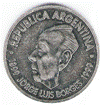Modern Languages and Literatures, Department of

Spanish Language and Literature Papers
Document Type
Article
Date of this Version
1982
Abstract
El angel, el molino, el caracol del faro is (at least in the first four of its five parts) a kind of modern Calila e Dimna, a collection of fables, parables, fantasies and legends. It contains twenty estampas, five under the heading «Estampas rurales,» three «Estampas de cuentos,» three «Estampas del agua, del rio y del mar,» five «Estampas de un le6n y una leona,» and four «Estampas del faro,» all of which appeared individually in Barcelona's La Publicidad between February 7, 1919 and October 6, 1920. The collection seems to be an anomaly among the other secular works that Miró published in the late teens and early twenties; the last sections of Libra de Sigiienza (1914), El humo dormido (1918) and Alios y Leguas (1921, 1922) have readily recognizable autobiographical and philosophical overtones throughout, exploring the themes of time, memory, existence and language. However, El angel also employs an autobiographical voice in two strategic sections (the eleventh estampa at the exact center of the book and the last four estampas). A close examination of these autobiographical parts reveals a philosophical theme that unlocks the philosophical intent of the stories and fables.


Comments
Published in Roberta Johnson & Paul C. Smith, eds., Studies in Honor of José Rubia Barcia (Lincoln, Nebraska: Society of Spanish and Spanish-American Studies, 1982). Copyright © 1982 Society of Spanish and Spanish-American Studies.